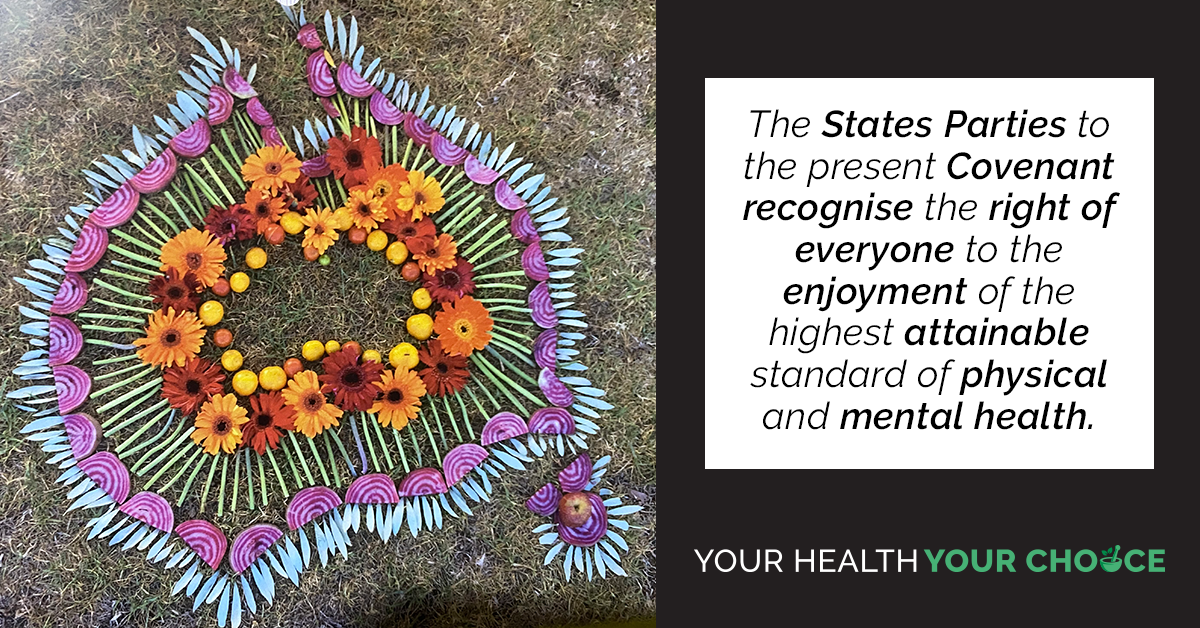Rights To Traditional and Complementary Medicine In International Law

Image courtesy of bingalum.com
The article ‘Evolution and Complementarity? Traditional and Complementary Medicine as Part of the International Human Rights Law Right to Health’ is an exploration of international human rights treaties and declarations to determine whether Traditional and Complementary Medicine (‘T&CM’) was included as part of the Right to Health. The Right to Health comes from Article 12 of the International Covenant on Economic, Social and Cultural Rights. Article 12(1) states: ‘The States Parties to the present Covenant recognize the right of everyone to the enjoyment of the highest attainable standard of physical and mental health.’ A more complete exposition of these arguments is available in (2020) 32 (1) Bond Law Review 63-96 at https://blr.scholasticahq.com/article/11881-evolution-and-complementarity-traditional-and-complementary-medicine-as-part-of-the-international-human-rights-law-right-to-health
WHAT WE FOUND
We found that although T&CM was not specifically mentioned in any of the treaties associated with the Right to Health, there was a lot of evidence that T&CM was part of the Right to Health and that a Right to T&CM could be inferred from multiples sources. These included the treaty documents themselves, statements made by the committees overseeing the treaties and the Special Rapporteurs for the Right to Health, the work and declarations of the World Health Organisation and other United Nations declarations.
EXAMPLES OF EVIDENCE
Examples of some evidence pointing to T&CM as part of the right to health include the Committee on Economic, Social and Cultural Rights’ (who oversee the International Covenant on Economic, Social and Cultural Rights) General Comment 14 statement, which explains and interprets what the right to health means. The Committee stated ‘the right to health contains freedoms and entitlements. Freedoms include the right to control one’s health and body.’ On this point, we contend that exercising the freedom and having an ability to choose T&CM is a fundamental expression of the right to control one’s health and body.
The Committee also clearly stated ‘indigenous peoples have the right to specific measures to improve access to health care services…[that] should be culturally appropriate, taking into account traditional preventative care, healing practices and medicines … States [should] refrain from prohibiting or impeding traditional preventative care, healing practices and medicines.’ The Beijing Declaration states, ‘People have a right and duty to participate … in the planning and implementation of their health care, which may include access to Traditional Medicine… Noting that Traditional Medicine may also be referred to as Complementary Medicine. Recognizing Traditional Medicine as one of the resources of primary health care services to increase the availability and affordability and to contribute to improve health outcomes.’
HUMAN RIGHTS IN AUSTRALIA
In finding an inferred right to T&CM as part of the Right to Health, we then turned our attention to Australia. There is some important background information on International Human Rights law in Australia that was not included in our article but is included here. International human rights law is the realm of law focussed on how governments uphold or violate international human rights agreements. Unlike in many European countries where once a government signs and ratifies a treaty it becomes fully operational in that country, in Australia, international law only becomes operational once it goes through a process of being incorporated into domestic legislation. Currently in Australia, instead of whole treaties becoming instantly operational, only some agreed component parts of some of the international human rights treaties are operational in our legal system. This is limited to sex, race, disability and age discrimination laws that are dealt with by the Anti-Discrimination Commissions.
THE FRAYED PATCHWORK QUILT
Currently, there is no national Australian Charter of Human Rights to protect all our rights and freedoms. Our human rights protections have been described as a patchwork quilt in need of mending. Queensland has just enacted a Human Rights Act, that became operational on the 1st of January, 2020. The only other jurisdictions that have enacted Human Rights Charters are the ACT and Victoria. Neither the ACT nor Victoria have included the Right to Health in their Acts. The Human Rights Act in Queensland is the first and only piece of domestic law that includes a Right to Health Services. Unlike in European countries who have signed on the Right to Health, it is not a wholesale activation of the Right to Health.
WHAT DOES A RIGHT TO HEALTH SERVICES IN QUEENSLAND MEAN?
As explained on the Queensland Government website ‘the Act requires the Queensland State government to consider human rights in all decision-making and action, and only limit human rights in certain circumstances and after careful consideration. The human rights protected under the Act are not absolute. This means that the rights must be balanced against the rights of others and public policy issues of significance. It means that Queensland government departments and public service employees have a responsibility to respect, protect and promote the human rights of individuals. They must act in a way that is compatible with human rights obligations when delivering services and interacting with the community.’ The full extent of what this Act means to Queenslanders may only become known with the passage of time.
AUSTRALIA DROPS THE BALL
Our article explores that if there is a right to T&CM in international human rights law, Australia is not fulfilling some of its obligations to ensure the right is realized for all Australians. We highlighted the lack of national policy on T&CM in Australia, the failure of adequate T&CM practitioner regulation which continues to harm Australians, the lack of policy addressing integration of T&CM into national health service delivery, the recent Australian government decision to make 16 natural therapies ineligible for private health insurance rebates and the appalling failure of the Closing the Gap policy which fails to recognize and incorporate traditional Aboriginal medicine.
A WAY FORWARD
For these reasons, we propose that the new treaty Framework Convention on Global Health (‘FCGH’) could expressly and specifically articulate a Right to T&CM as part of the Right to Health which may go some way to remedy the current deficits. In this way, governments might more effectively harness the potential contribution of T&CM and fundamentally reorientate health systems towards more cost-effective wellness and people centred care in realising the right to health for all. The authors are in contact with the project leader of the FCGH and hope to advance the Right to T&CM with this initiative.
Angela Doolan, PhD Scholar and Assistant Teaching Fellow, Faculty of Law, Bond University, Qld, Australia and Greg Carne, Associate Professor, School of Law, University of New England, NSW, Australia.
« Return to News & Features
